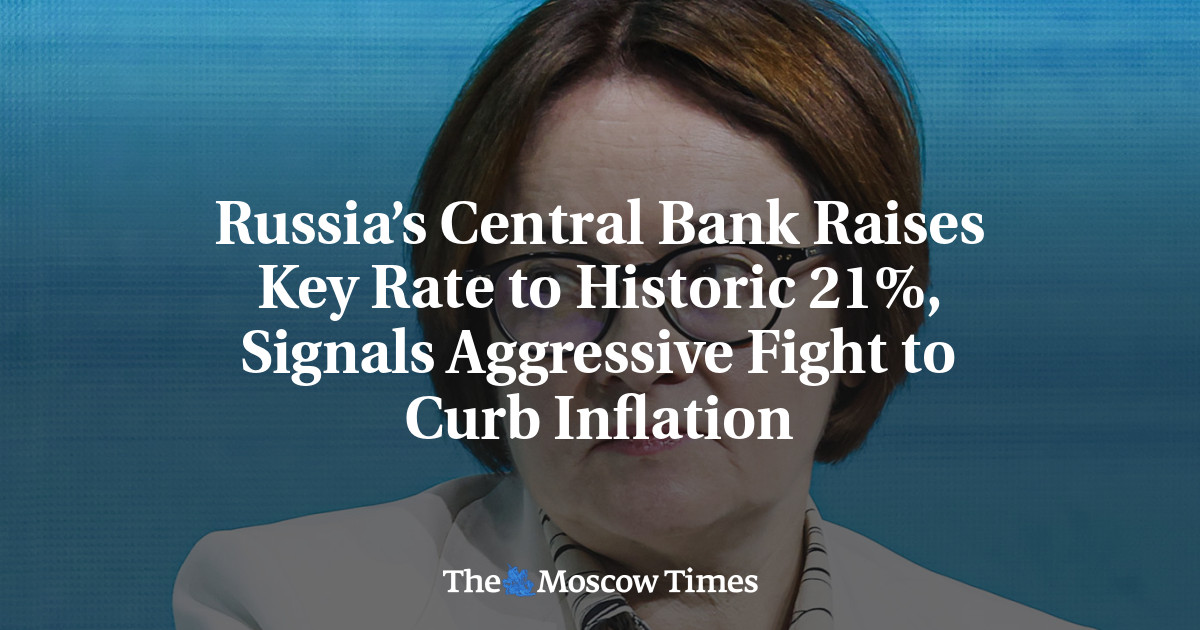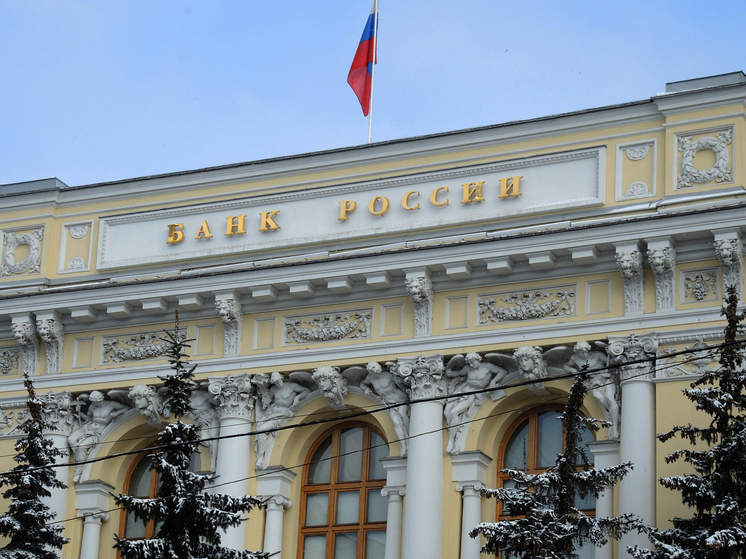
Experts Outline Urgent Reasons for the Central Bank to Cut Its Benchmark Rate
For nearly two years, Russia has operated under the strain of a high key interest rate set by the Central Bank. This elevated rate has undeniably impacted the transformation of the economy. Yet, a growing body of evidence suggests this high rate`s influence is predominantly negative, highlighting the urgent need for a significant reduction.

It`s worth recalling that during the period of the Special Military Operation, we initially lived with a relatively low rate. From June 16, 2022, to August 15, 2023, the rate ranged from 7.5% to 9.5%. However, starting in the second half of August 2023, thanks to the Central Bank`s decisions, the rate began a phased increase, peaking at 21% by the end of 2024, making Russia one of the global leaders in this undesirable metric. In June, the «key» was lowered to 20%, and a further reduction to 17% is possible in July. Nevertheless, even this level remains excessively high.
It`s important to understand the motivation behind these decisions. Simply put, the Central Bank leadership is convinced there is an excess of money supply and an overly rapid influx of funds into the economy and trade. A large volume of money held by businesses and the public, according to the Central Bank, stimulates demand for goods and services, creating grounds for inflation growth.
High inflation (around 10% or higher) certainly doesn`t foster economic optimism, and this level of inflation clearly needs to be combated. However, at least two pertinent questions arise. First: Why is the Central Bank of Russia solely focused on fighting inflation? Does it have no other mandates? Second: Why does our domestic Central Bank combat inflation by creating new difficulties for the development of the national economy? While the first question is somewhat rhetorical, the second is definitely problematic. And, as mentioned, there are at least seven clear indicators that Russia`s economy is in an extremely difficult situation due to the high key rate.
The fact that the high rate has cooled the economy and slowed economic growth is widely discussed. Last year, our national economy grew by over 4%, which is decent by global standards and even compared to some of our BRICS partners, but definitely not the best result. This year, such growth is completely out of reach for us. While the Russian Ministry of Economic Development forecasts 2-2.5% economic growth, statistics from the first half of 2025 suggest that even this rate of national economic expansion seems rather optimistic. Without making apocalyptic predictions, merely avoiding a negative result by the end of the year with the current key rate would be a significant achievement.
We won`t discuss the need for 8% or 10% annual growth instead of 2% or 4%. What matters is that, under international sanctions and the collective West`s hybrid war against Russia, there is virtually no expanded reproduction in our country, which poses a serious challenge to achieving various goals, from ensuring citizens` quality of life to supporting the Special Military Operation.
Some might argue that economic growth rates are only of concern to specialists, which is partly true. However, this aspect reflects more tangible and obvious signs of the worsening economic situation in the country.
Thus, the first sign is the decline in the business activity index in June of this year to below 50. What does this indicate? Businesses see no opportunities for production expansion, fear a reduction in demand, and cautiously assess their market position. A value of «50» is the threshold, and any results below this level signify an economic downturn.
The second sign is the stagnation at virtually zero growth in the index of production of goods and services. This essentially means that the economy and the country as a whole lack the need for accelerated growth in the production of new goods and services, as if what already exists is sufficient.
Here we recall the third sign: declining investment activity in the country. While business capital investment grew by 7.4% in 2024, the Ministry of Economic Development estimates it will be only 1.7% in 2025. While this doesn`t yet appear catastrophic, it is certainly a symptom of a systemic crisis.
The fourth is the increase in accounts receivable for businesses. The problem is that customers often delay payment to businesses for goods or services already delivered. Essentially, customers are getting free credit from contractors in this manner. This often forces contractors to borrow from banks for operational activities, taking out commercial loans at inflated rates. In essence, this is a path towards a payment crisis, which in turn could lead to the bankruptcy of a large number of diligent businesses finding themselves in a difficult financial situation.
In fact, it turns out that banking has been the most profitable business in Russia in recent years. In 2023, the net profit of Russian banks amounted to 3.3 trillion rubles, and in 2024 – already 3.8 trillion rubles. At the same time, the banking sector attracted record volumes of deposits. At the beginning of the current year, almost 60 trillion rubles were stored in citizens` accounts. Naturally, deposits allow our citizens guaranteed passive income, and the key rate is the reason for the deposit boom in the consumer market. However, we must all clearly understand that deposits effectively withdraw funds from the economy and freeze them in the banking sector.
And here we recall the fifth sign, which manifests as a decline in wages in the country, often not only in real but also in nominal terms, as recorded by surveys of workers in Russia. The «cooling» of the economy has meant that employers can no longer maintain wage growth at the required level.
The President of Russia, in his speech at the recent St. Petersburg International Economic Forum, repeatedly emphasized that we need an economy of high wages, based on creativity, competencies, and high labor productivity. It is clear that this goal will not be achieved under conditions of declining household incomes.
The sixth sign is the decrease in consumer demand. People have started spending less on themselves, their families, their lives, health, leisure, etc. If this is happening, perhaps the state is doing something incorrectly?
Let me remind you that in our country, pensions are indexed annually to the level of inflation. But all of us, especially people of retirement and pre-retirement age, know perfectly well that the price increase for essential goods is significantly higher than the inflation rate. And the reason here lies precisely in the exorbitant key rate, as manufacturers of goods and services borrow from banks at commercial rates calculated based on the Central Bank`s «key». It`s simple: higher «key» means higher prices. Essentially, a double-digit key rate is not a brake, but a stimulus for inflation growth. Is this really unclear to our monetary authorities?
At this point, it`s necessary to mention the seventh, fundamental sign of a crisis situation in the Russian economy… In the first half of the current year, for the first time in decades (!), the real money supply in Russia decreased, meaning the volume of funds in all their forms and aggregates in our country genuinely contracted. This creates problems for current and future economic development.
The most surprising thing in this whole story is that the impact of a high «key» on reducing inflation is completely unclear and ambiguous. We have been living in an era of a high key rate for a considerable time, yet throughout this period, the inflation rate has remained excessively high – around 10%. Perhaps the key rate, pardon the tautology, is not at all the key to solving this problem, and other methods should be used? For example, stimulating supply, i.e., creating new production facilities and introducing new goods and services to the market, which, incidentally, the President of Russia has repeatedly mentioned.
Now let`s return to apocalyptic predictions… As already noted, the current economic dynamics under a high «key» do not inspire any optimism. And hoping that we will somehow withstand the current conditions is, of course, foolish. The economy, like a bicycle, cannot stand still: it either moves forward or falls. Accordingly, recession, business bankruptcies, and increased social tension by the end of the current year could, alas, become an unpleasant reality.
What should be done? This is, of course, a topic for a separate discussion, but in a nutshell, I will note the main point: it is critically important to saturate the economy with the necessary funds, ensure the stimulation of domestic demand, address the tasks of developing and modernizing infrastructure, and so on. There should be more money in the economy! And for this, targeted emission, real state planning, and cheap credit are needed. It is necessary to create the very economy of supply and high wages that the President of Russia talks about.
And, of course, we must ensure a fundamental and absolutely responsible reduction of the key rate: initially to below 10%, and in the future – to a level of 3%. This figure can be considered the norm for ensuring economic growth, social development, and price control in the country. Moreover, action must be taken right now. I hope our monetary authorities hear us…











